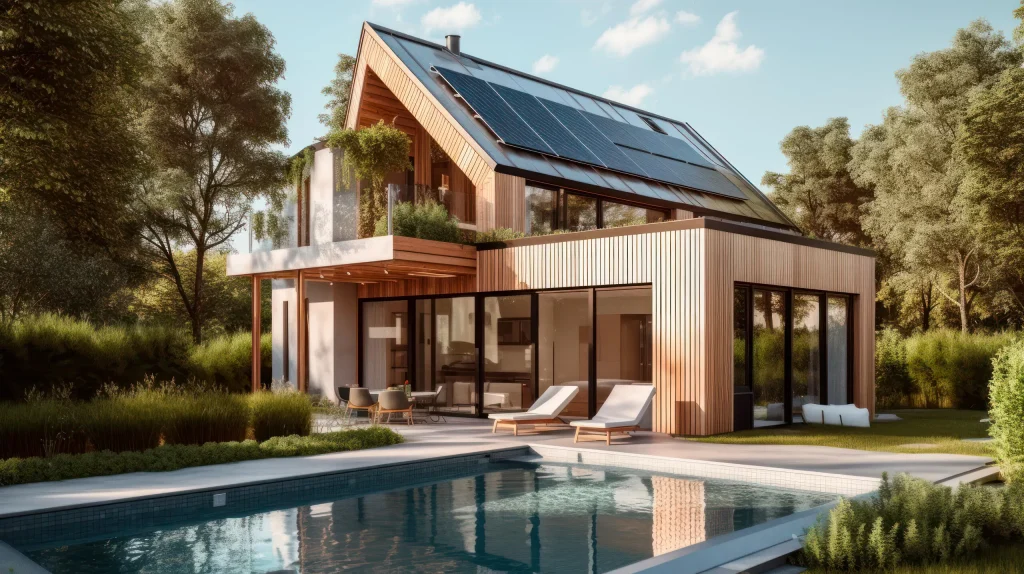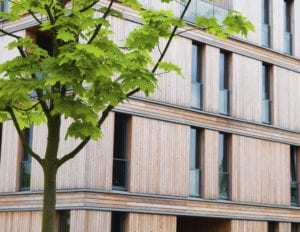When envisioning what homes of the future may look like, there are endless possibilities. However, given that the need for sustainable living is becoming more pressing, it is highly likely that homes of the not-so-distant future, at least, are going to be built with sustainability at the fore.
Demand for sustainability is increasing, as explored in our latest report, which found that 7 in 10 respondents not only believe that living a sustainable lifestyle is important, but that sustainable homes are important too.
And, with a further 40% of respondents stating they believe that smart home technology can enable homes to become more sustainable, we
are likely to see a blend of the latest technology, sustainable design and environmental principles merge to create sustainable homes of the future.
So, what is this going to look like over the next 10 -15 years?
Smart integration for energy efficiency
Smart home devices are no longer a novelty but a reliable means of optimising energy consumption and increasing energy saving. Homes of the future will harness the advances of this technology and seamlessly support homeowners in managing their energy and consumption habits.
For example, Home Energy Management Systems (HEMS), like Wiser, will be a prime feature in many new and existing homes and will prove particularly useful for regulating lighting, appliances, heating, and cooling systems, automatically shifting energy use to optimal times in a way that still fits in with the household’s comfort, needs and habits.

Renewable energy sources
Another change that we’ll see in the not-too-distant future, thanks to shifts in behaviour and government policy, is the more widespread adoption of renewable energy sources.
With legislation across the world adapting to prioritise energy efficiency, solar panels will become an increasingly popular and cost-effective method of generating energy globally, especially given that the cost of solar panels has gone down by over 60% since 2009. In the United States, California’s 2020 Solar Mandate already dictates that all newly built homes should have solar panel systems sized to provide a full year’s energy usage. Solar panels, will accompany electric boilers and heat pumps which will work to heat future homes efficiently without the need to rely on gas, reducing emissions and environmental impact.
The harvesting of kinetic energy and the adoption of small wind turbines will also contribute to self-sufficient homes that have a reduced impact on the planet.
Sustainable water systems
Water scarcity is of global concern and homes of today are already beginning to address this issue, which is expected to become more commonplace in the years to come.
Rainwater harvesting, which involves collecting and storing rainwater that would ordinarily go down the drain, is becoming increasingly popular. Therefore, systems that filter, store and cool rainwater will become a regular feature in the homes of tomorrow.
As will waste water heat recovery systems, which work by recovering the heat from water that would usually wash away following a shower, using it instead to heat incoming fresh cold water entering the home.
Waste management
According to our 2023 global consumer survey, over half of people are committing to recycling to reduce their carbon footprint; a good indicator that advanced recycling systems are likely to be welcomed in homes of the future. Not only will they facilitate the processing of waste with composting units, but new homes are also likely to harness new technologies, such as smart bins, that can track waste generation. Such technology will also be integrated with HEMS to give households a better understanding of their total consumption habits.
As we look to the future, sustainable living will become a necessity and evolving technologies will support homeowners in minimising their carbon footprint & reducing waste enabling them to take action on environmental issues.
With the transition to more tech-centric lifestyles helping us to collectively work to tackle climate change, the future of homes and their role in preserving our planet looks promising.
To learn more about how our sustainable solutions can benefit you and your home, visit here.




Add a comment